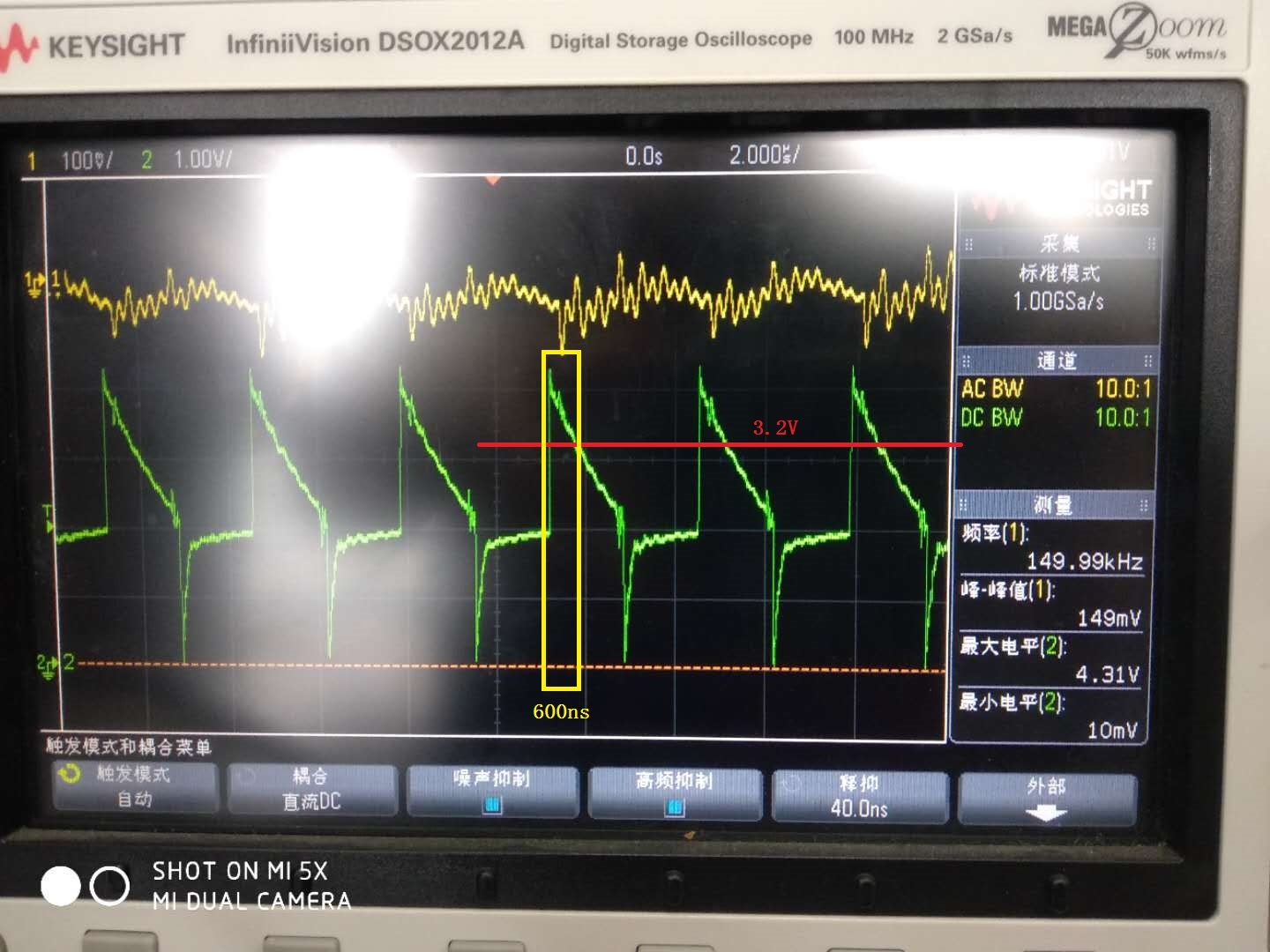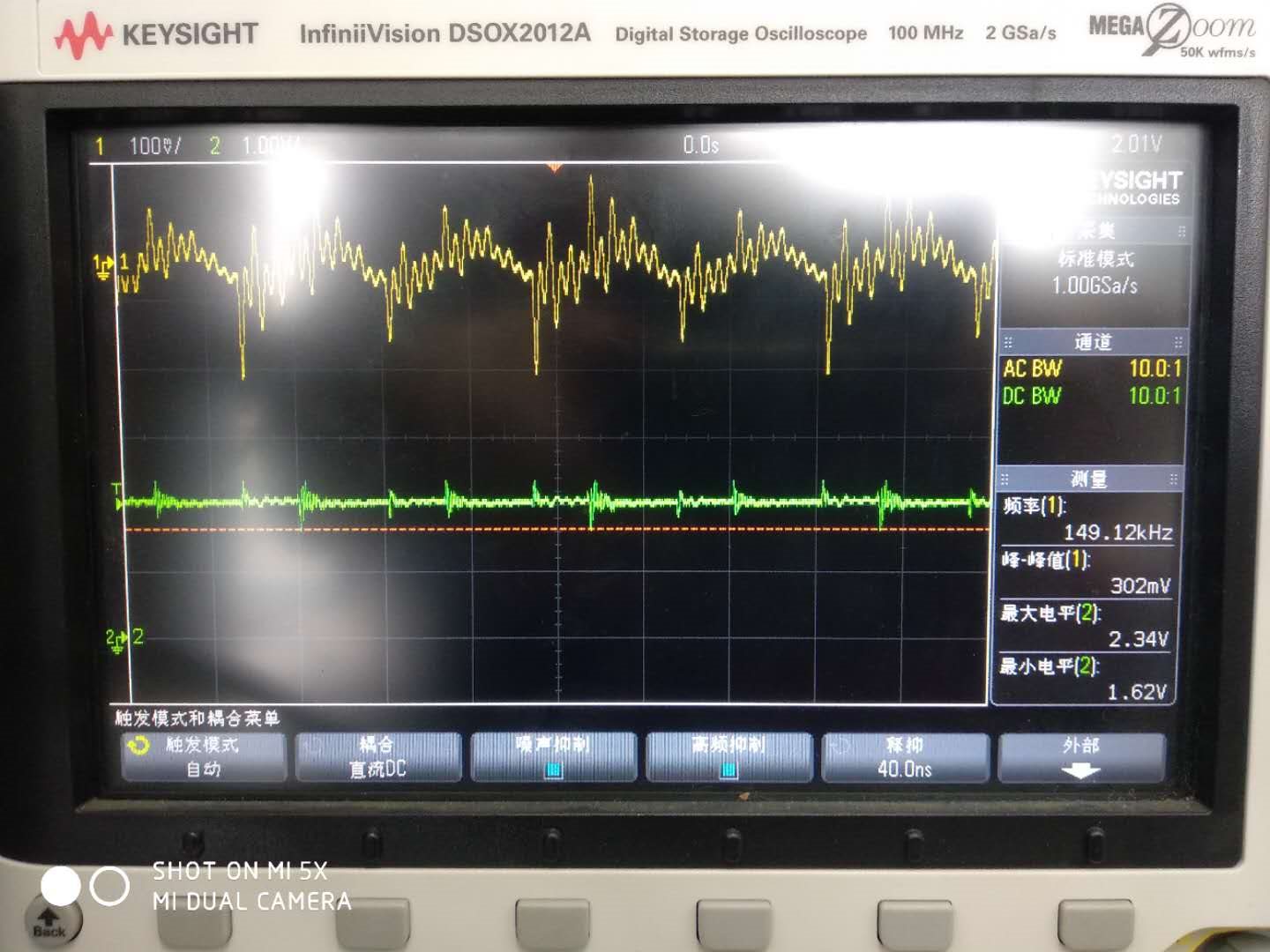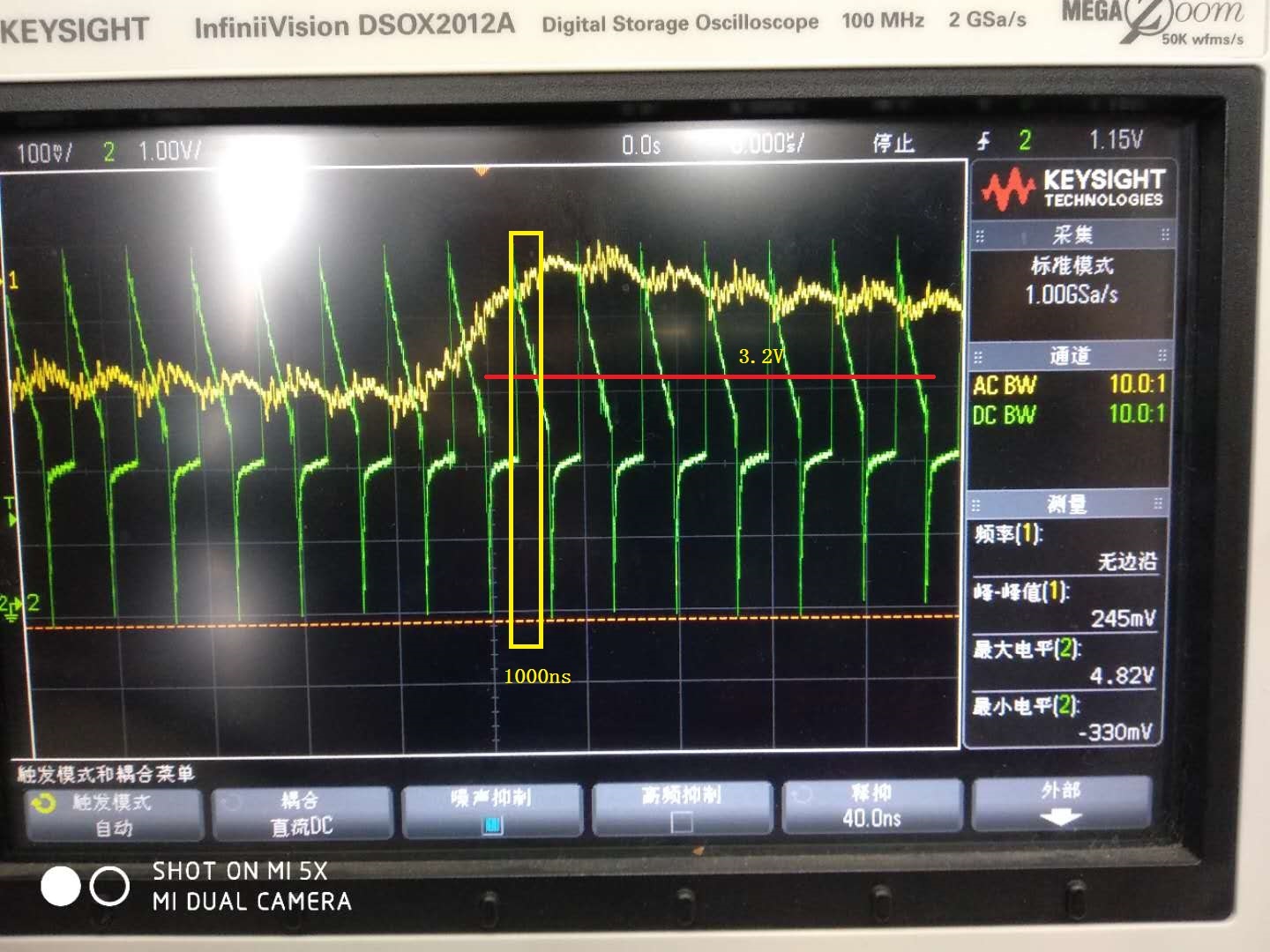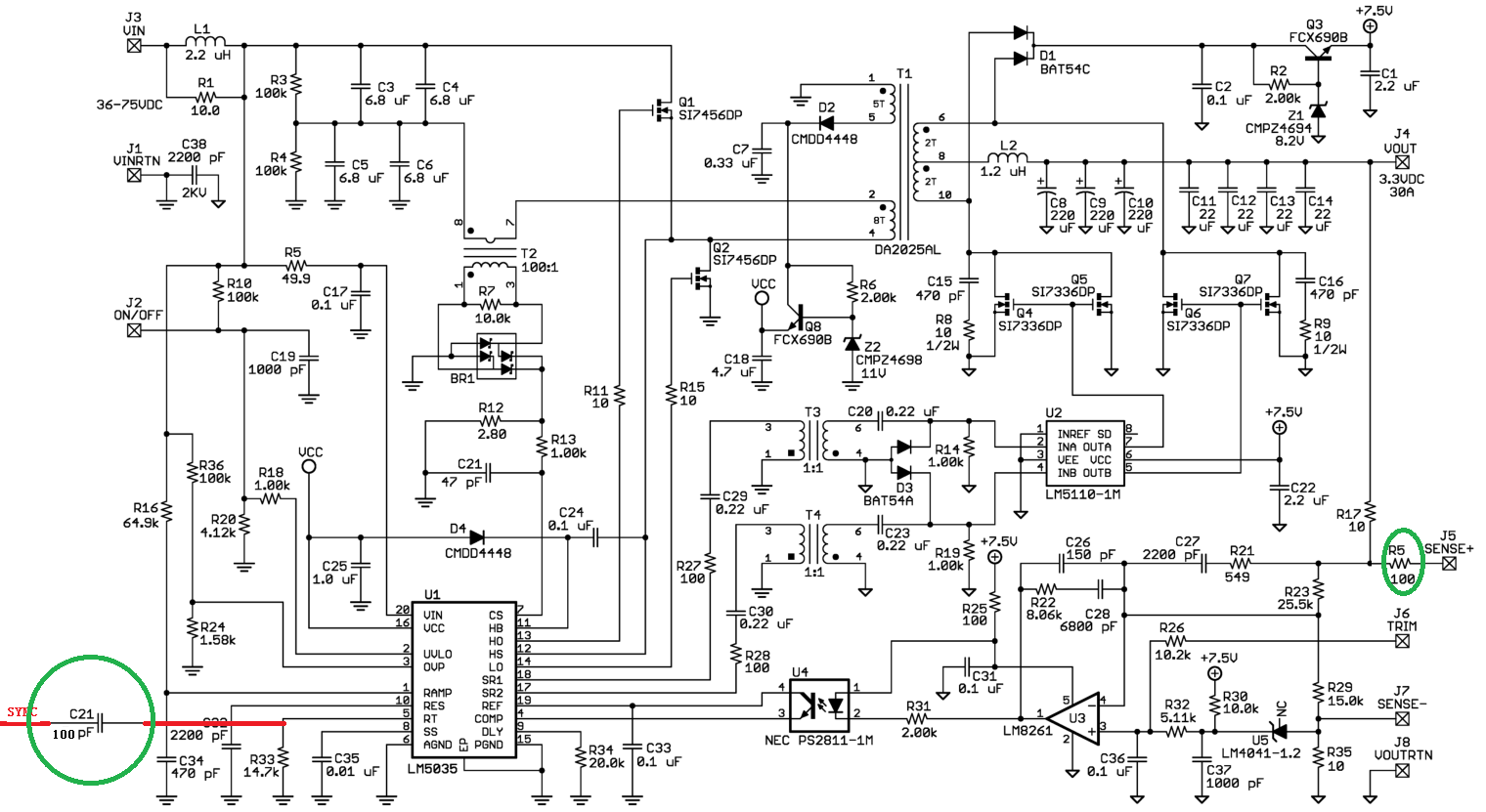Seniors:
Recently debugging the LM5035's external distribution frequency function.
According to the manual recommendation, I connected a 100pF capacitor in series with the RT pin, and then injected a PWM wave with a magnitude of 0-3.3V and a duty cycle of 0.5 from 270kHz to 330kHz. According to the manual, the normal bias voltage of the RT pin is 2V, and the injected synchronous frequency is higher than 3.2V. However, after such PWM injection, the power supply is unstable, the output ripple will self-excitation to 200mV, the normal ripple is 50mV, and the frequency is 300kHz. Later, I adjusted the amplitude to -0.3V~2.6V and found that the power supply can be synchronized and stable.
There is doubt now. The manual recommends that the external synchronization frequency be 10% higher than the power frequency, that is, 330kHz, but the injection frequency is also 270kHz~330kHz. Why?
The manual recommends a high level greater than 3.2V, and I will be self-excited when I inject 3.3V, but it is normal to inject 2.6V. Why is this?





